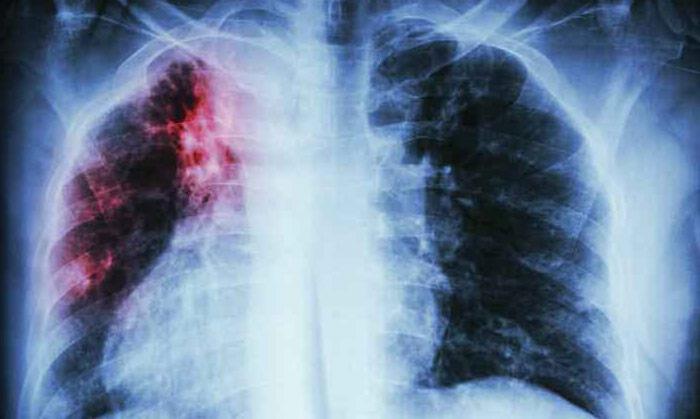Interstitial Lung Disease (ILD)
Interstitial lung disease describes a large group of disorders, most of which cause progressive scarring of lung tissue. The scarring associated with interstitial lung disease eventually affects your ability to breathe and get enough oxygen into your bloodstream. Interstitial lung disease describes a large group of disorders, most of which cause progressive scarring of lung tissue. The scarring associated with interstitial lung disease eventually affects your ability to breathe and get enough oxygen into your bloodstream. Dr. Anand Singh provides treatment for all interstitial lung diseases.
This disease can be caused by long-term exposure to hazardous materials, such as asbestos. Some types of autoimmune diseases, such as rheumatoid arthritis, also can cause ILD. In some cases, however, the causes remain unknown.
Some types of lung scarring can be reversible if picked up early and treated and the causative factor is removed.
“For many types of lung scarring , it’s generally irreversible”, Says Dr. Anand Singh, Lung specialists in The Clementine Churchill Hospital in Harrow, and Syon Clinic in Brentford, West London, OSD Healthcare Hertfordshire. Medications may slow the damage of this disease, but many people never regain full use of their lungs.
For any diseases causing progressive scarring of lung treatment by an lung specialists should be done.
Dr. Anand Singh is an expert Lung specialists in The Clementine Churchill Hospital in Harrow, and Syon Clinic in Brentford, West London, OSD Healthcare Hertfordshire with experience in managing all interstitial and fibrotic lung diseases
Lung transplant is an option for some people who have ILD.

Cause of ILD
This disease seems to occur when an injury to your lungs triggers an abnormal healing response. Ordinarily, your body generates just the right amount of tissue to repair the damage. But in ILD, the repair process goes awry and the tissue around the air sacs (alveoli) becomes scarred and thickened. This makes it more difficult for oxygen to pass into your bloodstream. Occupational and environmental factors
- Silica dust
- Asbestos fibers
- Grain dust
- Bird and animal droppings
- Radiation treatments
- Indoor hot tubs
Factors that may make you more susceptible to interstitial lung disease include:
- Age: ILD is much more likely to affect adults, although children sometimes develop the disorder.
- Exposure to occupational and environmental toxins: If you work in mining, farming or construction or for any reason are exposed to pollutants known to damage your lungs, your risk of interstitial lung disease is increased.
- Gastroesophageal reflux disease: If you have uncontrolled acid reflux or indigestion, you may be at increased risk of this disease.
- Smoking: Some forms of ILD are more likely to occur in people with a history of smoking, and active smoking may make the condition worse, especially if there is associated emphysema.
- Radiation and chemotherapy: Having radiation treatments to your chest or using some chemotherapy drugs make it more likely that you’ll develop lung disease.
Interstitial Lung Disease Prevention
There is no way to prevent idiopathic or genetic ILD, but it is possible to prevent some of the types with known causes. You can reduce your risk by:
- Wearing a respirator (a mask that filters particles from the air) around harmful substances, such as asbestos, metal dust, or chemicals.
- Quitting smoking.
- Receiving immunizations for flu and pneumonia to help protect your lungs.
Diagnosis Of Interstitial Lung Disease
Identifying and determining the cause of ILD can be challenging. A large number of disorders fall into this broad category. In addition, the signs and symptoms of a wide range of medical conditions can mimic interstitial lung disease, and doctors must rule these out before making a definitive diagnosis.
Some of the following tests may be necessary.
- Blood tests
- Computerized tomography (CT) scan.
- Echocardiogram
- Pulmonary function tests
- Bronchoscopy
- Lung tissue analysis
Treatment of Interstitial Lung Disease
The lung scarring that occurs in many subtypes of this disease can’t be reversed, and treatment will not always be effective in stopping the ultimate progression of the disease. Some treatments may improve symptoms temporarily or slow the disease’s progress. Others help improve the quality of life.
Dr. Anand Singh – Lung specialist in The Clementine Churchill Hospital in Harrow, and Syon Clinic in Brentford, West London, OSD Healthcare Hertfordshire is of the opinion that early diagnosis , treatment initiation and removal of causative factor ( if applicable is important)
Medications
Intense research to identify treatment options for specific types of interstitial lung disease is ongoing. Based on currently available, scientific evidence, however, your doctor may recommend:
- Corticosteroid medications.
- Medications that slow the progression of idiopathic pulmonary fibrosis like Anti fibrotics
- Immunosuppressive medications
- Medications that reduce stomach acid.
- Oxygen therapy
- Pulmonary rehabilitation
